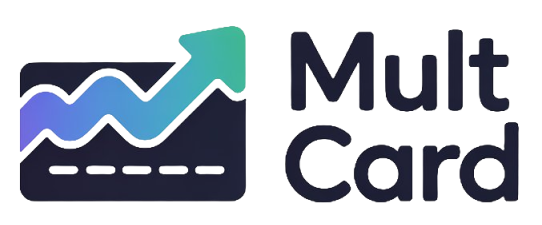Navigating the world of personal finance can sometimes feel complex, especially when considering a significant step like applying for a loan. The process might seem daunting at first, filled with unfamiliar terms and requirements. However, with a clear understanding of the fundamentals, it becomes a much more manageable journey.
This guide is designed to demystify the personal loan application process. By breaking it down into understandable steps, you can approach the task with confidence, equipped with the knowledge needed to make informed decisions for your financial future.
What Exactly Is a Personal Loan?
A personal loan is a type of installment loan that provides borrowers with a lump sum of money, which is then paid back over a set period in fixed monthly payments. Unlike a mortgage or an auto loan, which are secured by property, most personal loans are unsecured. This means they are not backed by collateral.
Because they are unsecured, lenders rely heavily on your financial history to determine your creditworthiness. The funds from a personal loan are versatile and can be used for a wide range of purposes, from consolidating debt to financing a large purchase or covering an unexpected expense.
When Might a Personal Loan Be a Suitable Option?
Personal loans can be a useful financial tool in various situations. Understanding their common applications can help you determine if one aligns with your needs.
Consolidating High-Interest Debt
One of the most popular uses for a personal loan is debt consolidation. If you have multiple high-interest debts, such as credit card balances, a personal loan can combine them into a single loan. Often, this new loan has a lower interest rate, which can simplify your payments and potentially save you money on interest over time.
Financing a Major Purchase or Project
Whether you’re planning a home renovation, paying for a wedding, or purchasing a significant item, a personal loan can provide the necessary capital. It offers a structured repayment plan, which can be more predictable than using a credit card, especially for a large, one-time expense.
Covering Unexpected Expenses
Life can be unpredictable. A sudden medical bill, an urgent home repair, or other unforeseen costs can strain your budget. A personal loan can bridge the financial gap, allowing you to cover these emergency expenses without draining your savings or resorting to higher-cost borrowing options.
Key Factors Lenders Consider in Your Application
When you apply for a personal loan, lenders assess several key factors to gauge the risk of lending to you. Being aware of these elements allows you to prepare effectively.
Credit Score and History
Your credit score is a numerical representation of your creditworthiness and is a primary factor for lenders. A higher score generally indicates a history of responsible borrowing, which can lead to better loan offers with lower interest rates. Your credit history, which details your payment patterns and existing debts, is also closely examined.
Income and Employment Stability
Lenders need assurance that you have a steady source of income to make your monthly payments. They will typically verify your employment status and review your income level. A stable employment history and sufficient income to cover the loan payments, in addition to your other obligations, are crucial.
Debt-to-Income (DTI) Ratio
Your debt-to-income ratio is a percentage that compares your total monthly debt payments to your gross monthly income. Lenders use this metric to assess your ability to manage additional debt. A lower DTI ratio is generally preferred, as it suggests you have a healthy balance between your income and your existing financial commitments.
A Step-by-Step Guide to the Application Process
Applying for a personal loan involves a series of logical steps. Following a structured approach can make the process smoother and more efficient.
Step 1: Assess Your Financial Situation
Before you begin, take a close look at your finances. Determine exactly how much you need to borrow and what you can realistically afford to pay back each month. Review your budget, check your credit score, and get a clear picture of your overall financial health. This self-assessment is the foundation of a successful application.
Step 2: Research and Compare Lenders
Not all loans are created equal. Different lenders—including banks, credit unions, and online platforms—offer varying interest rates, terms, and fees. Take the time to research several options. Compare their offerings to find a loan that best fits your needs and financial profile. Many lenders offer a pre-qualification process that can estimate your potential rate without affecting your credit score.
Step 3: Gather the Necessary Documents
To streamline your application, gather all the required documentation in advance. While specific requirements vary by lender, you will typically need to provide:
- Proof of Identity: Government-issued ID, such as a driver’s license or passport.
- Proof of Income: Recent pay stubs, tax returns, or bank statements.
- Proof of Address: A utility bill or lease agreement.
- Employment Information: Your employer’s name and contact details.
Step 4: Complete and Submit the Application
Once you’ve chosen a lender and have your documents ready, you can complete the formal application. Fill out the form carefully and ensure all information is accurate. Most lenders now offer a simple and secure online application process. Double-check all entries before submitting to avoid any delays.
Step 5: Review the Loan Offer Carefully
If your application is approved, the lender will present you with a formal loan offer. It’s essential to review this document thoroughly before accepting. Pay close attention to the interest rate, the repayment term, the monthly payment amount, and any associated fees. Make sure you understand and agree to all the terms and conditions.
Understanding Important Loan Terms and Fees
Familiarizing yourself with the language of loans is crucial for making a well-informed decision.
Interest Rates: Fixed vs. Variable
A fixed interest rate remains the same for the entire life of the loan, providing predictable monthly payments. A variable interest rate can fluctuate over time based on market conditions, meaning your monthly payment could change. Most personal loans come with fixed rates, which many borrowers prefer for budgeting purposes.
Loan Term (Repayment Period)
The loan term is the length of time you have to repay the loan. Terms typically range from one to seven years. A shorter term means higher monthly payments but less interest paid overall. A longer term will result in lower monthly payments, but you’ll pay more in total interest over the life of the loan.
Common Fees to Watch For
Be aware of potential fees that can add to the cost of your loan. A common one is an origination fee, which is a percentage of the loan amount deducted from the funds you receive. Other possible charges include late payment fees and prepayment penalties, although the latter is becoming less common.
Final Thoughts on Responsible Borrowing
A personal loan can be an effective way to achieve a financial goal, but it’s also a significant responsibility. Borrowing wisely means only taking on debt you are confident you can repay without straining your financial well-being. By carefully planning, researching your options, and understanding all the terms involved, you can use a personal loan as a positive tool to move forward.


